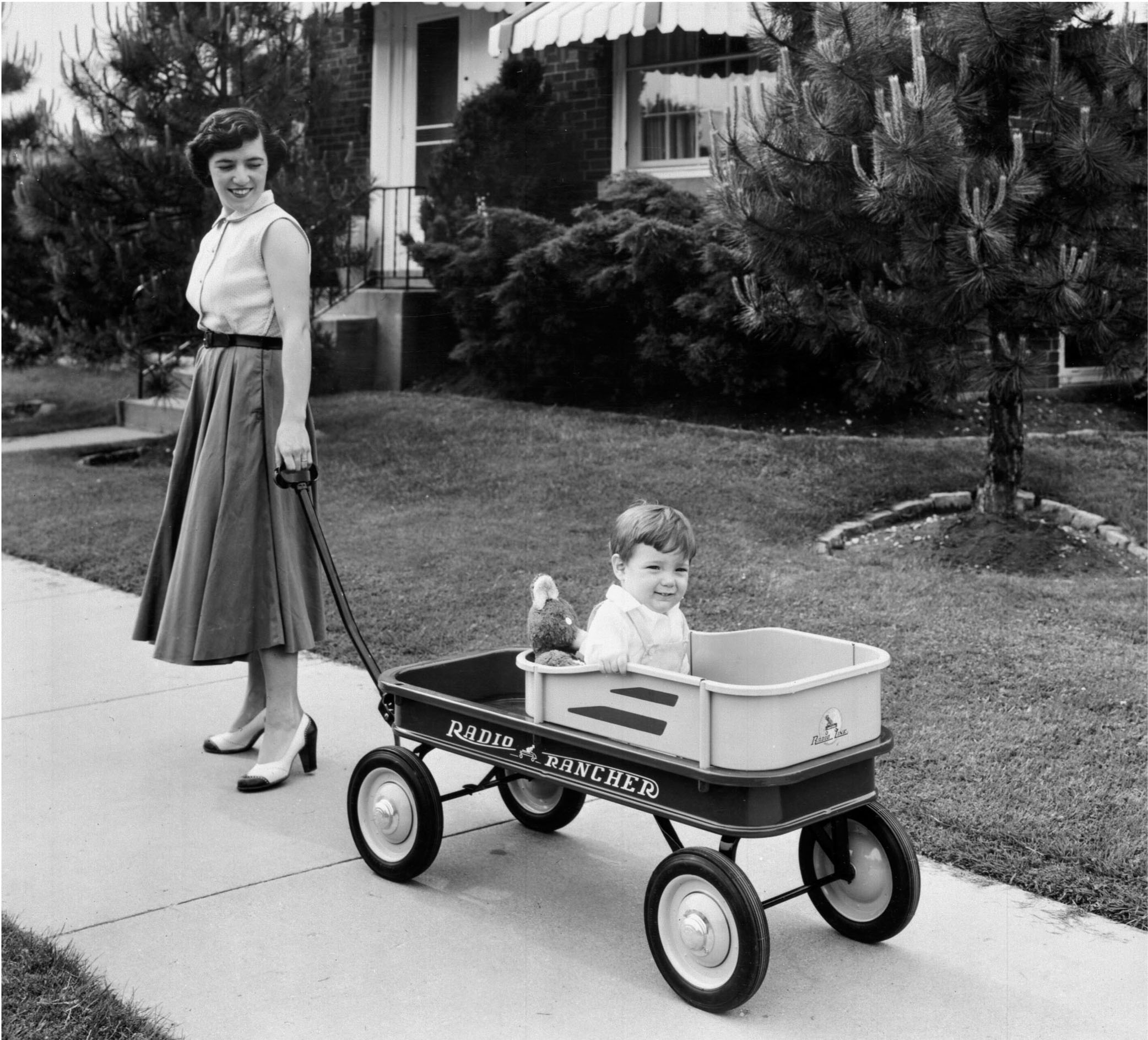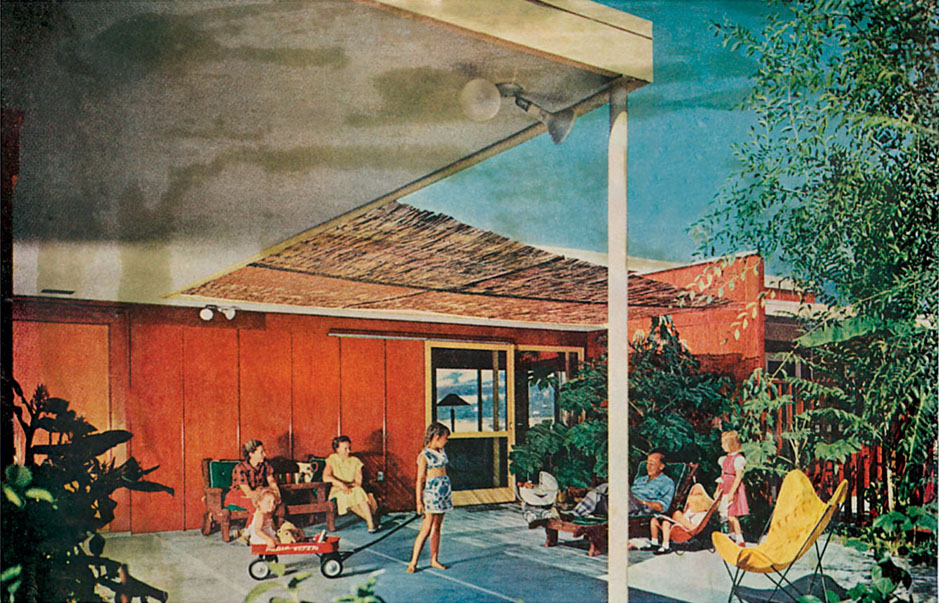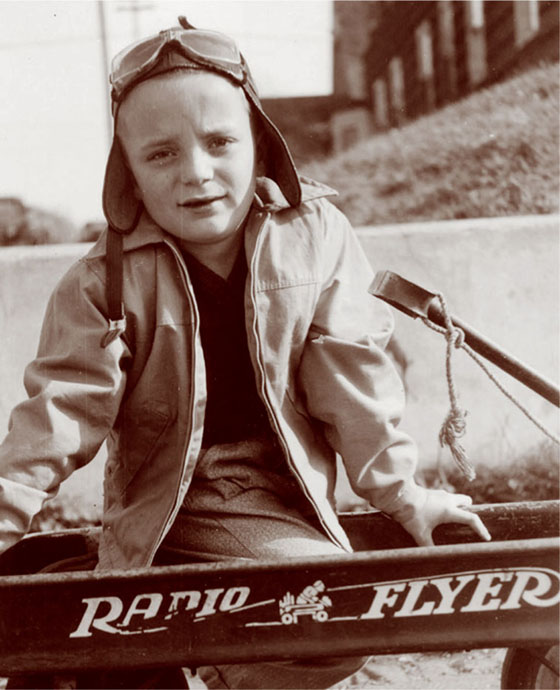

An image of suburban life and play with a Radio Flyer wagon from Better Homes and Gardens magazine (1953).
Better Homes and Gardens® (the “Magazine”) March 1953: Image on page 53 from the article titled “Today’s House Makes Good Sense” by John Normile, A.I.A./Meredith Corporation
When World War II ended, the United States was in a better economic condition than any other country in the world. All the nation’s efforts to bring about victory during the war had pulled it out of the Depression years, and new financial initiatives and an increase in manufacturing set the stage for the greatest, and longest, economic boom the country had ever seen.
After the war, all rationing was lifted, and the newly elected President Truman reduced taxes to encourage consumer spending. The GI Bill of Rights allowed veterans to go to college and provided low-cost loans for them to buy homes and farms. Prosperity and overall optimism made most people feel it was a good time to bring children into the world, and so, as twelve million veterans returned home, they focused on family and began having children in record numbers. Cue the arrival of America’s largest generation yet: the baby boomers.
The growing population of American middle-class families also presented a prime opportunity to real estate developers. Developers went on a buying spree, purchasing empty land on the outskirts of cities, where they mass-produced inexpensive tract houses. This ignited a mass exodus of families from the cities to the suburbs. By 1950, more Americans lived in the suburbs than anywhere else in the country.
The most famous housing development created during this time was Levittown on New York’s Long Island, which turned four thousand acres of potato fields into the largest private housing project in United States history. For a total price of ten thousand dollars (or one thousand down, and seventy dollars a month), residents of Levittown could walk into a new house with three bedrooms, a fireplace, a gas range and furnace, and a landscaped lot of seventy-five by one hundred feet of healthy lawn. For a generation that had survived the Great Depression and World War II, these houses felt like a lavish luxury.
The move to suburbia also created a new, car-dependent lifestyle, which increased demand for automobiles. Shopping malls and chain stores began cropping up to provide the goods residents would need to fill their new homes. Most notably for Radio Steel, a backyard of one’s own brought demand for new products, such as lawn mowers, gardening gear—and wagons.
Keeping with the times, Radio Steel—now almost forty years old—switched from its wartime manufacturing back to making its trusted little red wagons, and even expanded to selling gardening wagons for adults, too. Sears, which was also headquartered in Chicago, was Radio Steel’s largest customer, and the company grew as the retailer expanded into malls. The shift in the country sparked a shift for the company, as Radio Steel expanded to meet consumer demand and secure its name in households across America. Sales quadrupled from 1946 to 1960. Antonio Pasin’s slogan “For every boy. For every girl” was quickly becoming a reality for America’s growing families.

A boy in an aviator cap gets ready to take flight in his beloved Radio Flyer.
Courtesy of Ethel Young